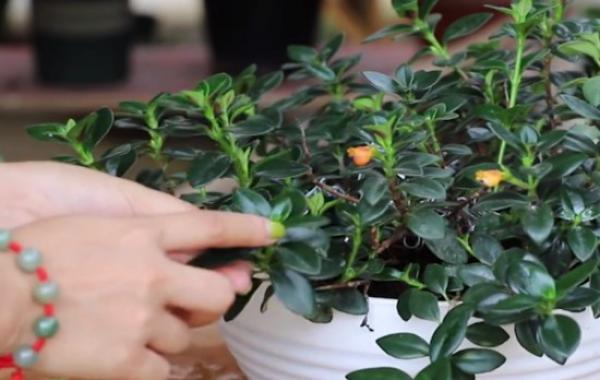Cultivation and Management techniques of Magnolia

When Magnolia is in full bloom, the petals spread in all directions, making the courtyard blue and white, dazzling white light, with high ornamental value; coupled with bursts of fragrance, refreshing. Therefore, it is very popular with people, so there are many Magnolia potted plants raised at home, so what is the meaning of Magnolia fengshui? The following is to introduce the taboos of Magnolia indoors. Magnolia Magnolia …
Magnolia not only has large flowers and many flowers, but also has bright colors and fragrance. The rare thing is that the flowering period is long and the petals are edible. It is a good choice for courtyard or indoor breeding. Magnolia mainly originated in central and southwestern China, and it is planted all over the world. The following editor will introduce how to raise magnolia and the breeding method of magnolia. Magnolia how to raise magnolia, magnolia culture method 1, soil: requires fertile, loose, well-drained soil. It can be prepared with 5 parts of pine needle rotten leaf soil, 2 parts of crude bran ash, 2 parts of coarse sand and 1 part of retted barnyard manure, and do not use fine sand or clay with poor permeability. The upper basin uses well-ventilated tile pots (plain burning pots), do not use glazed pots, porcelain pots, purple sand pots, etc., use deeper cylindrical flowerpots, buckle empty flowerpots under the pots, and erect them with bricks to prevent poor drainage; the bottom of the basin is paved with about 5 cm of slag and gravel. Second, moisture: the water should be suitable. Magnolia belongs to fleshy roots. If the basin soil is too wet, the leaves will wither and fall off, or even the rotten roots will die, and if they are too dry, they will wither and curl their leaves. They are flowers that are afraid of both waterlogging and drought. During the flowering period, when the petals are too open, it shows that the water is insufficient, and the suitable moisture is in the shape of a bud; the surface of the basin soil is dry, and the soil should be watered immediately when the soil is hard and cracked. Watering requires that the water temperature and soil temperature must be the same, and can not suddenly pour cold or hot water. Watering must be thoroughly watered, often half of the water will cause shallow roots. Magnolia should not be watered in spring and autumn, it should be watered every day in midsummer and must be watered in the evening, and the amount of water should be reduced at the end of autumn and watered every 10 days in winter. The overcast and rainy season should be moved to shelter. Third, fear of alkali: Magnolia prefers acidic soil, and the requirement for soil pH value is 5.56.3. In the northern region, magnolia is not easy to grow because most of the water and soil there are alkaline, which dissolves the protoplast of magnolia cells, resulting in slow growth and poor growth of flowers. Often irrigated with fermented Amoy rice water, the effect is better.
Magnolia is an early spring and fragrant flowering tree species. When planting, we should grasp the right time, neither too early nor too late. It is appropriate to plant Magnolia 10 days before sprouting in early spring or before spreading leaves after flower fade. Let's introduce it to you today.
Magnolia prefers fertilizer, but avoids big fertilizer; generally applying fertilizer twice during the growing period can be beneficial to flower bud differentiation and promote growth. Once in early spring, and again in May-June. Fertilizers often use mature organic manure. Newly planted seedlings do not need to be fertilized until after falling leaves or in the following spring. The root system of Magnolia is fleshy and can not tolerate stagnant water. It is advisable to keep the soil moist during the flowering and growing period. After entering the autumn, we should reduce watering, delay the rooting of magnolia, and promote the branches to mature in order to survive the winter.
It is generally not watered in winter, but only once when the soil is too dry. Magnolia branch wound healing ability is poor, so generally do not prune. However, for the sake of reasonable tree shape, the overgrown branches, withered branches, disease and insect branches and branches that hinder the beauty of the tree shape should still be cut off at the initial stage of leaf expansion.
When transplanting, regardless of the size of the seedlings, the roots should carry mud clumps and be careful not to damage the roots as far as possible. To ensure survival. Before planting, sufficient mature organic fertilizer should be applied in the hole as base fertilizer. After planting, seal the soil and press it, and pour enough water in time.
This is the end of the introduction. After the flowers fade, if there is no seed left, what should the residual flowers be? The ear is cut off so as not to consume nutrients and affect flowering in the coming year.
Related
- Is the orchid suitable for indoor use? Is it good for the body?
- How to prevent the empty root of orchids?
- What to do after the crab claw orchid is withered?
- Why are the leaves of orchids always yellow? Fertilizing and watering.
- Can the root of the gentleman orchid be saved if it is rotten?
- Diagnosis and treatment of cotton-blowing beetle insects in Cymbidium
- There is a way for a gentleman's orchid to rot.
- What is the most suitable temperature and humidity for the orchid?
- How to raise a gentleman's orchid? Cultivation techniques of Cymbidium
- How to prepare the nutritive soil for the cultivation of Cymbidium



